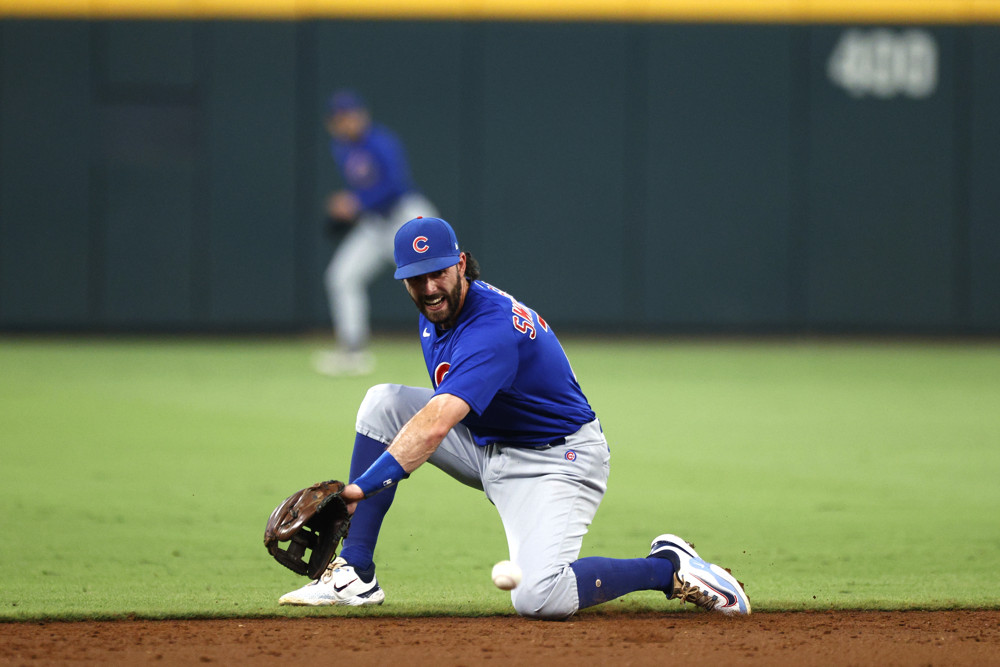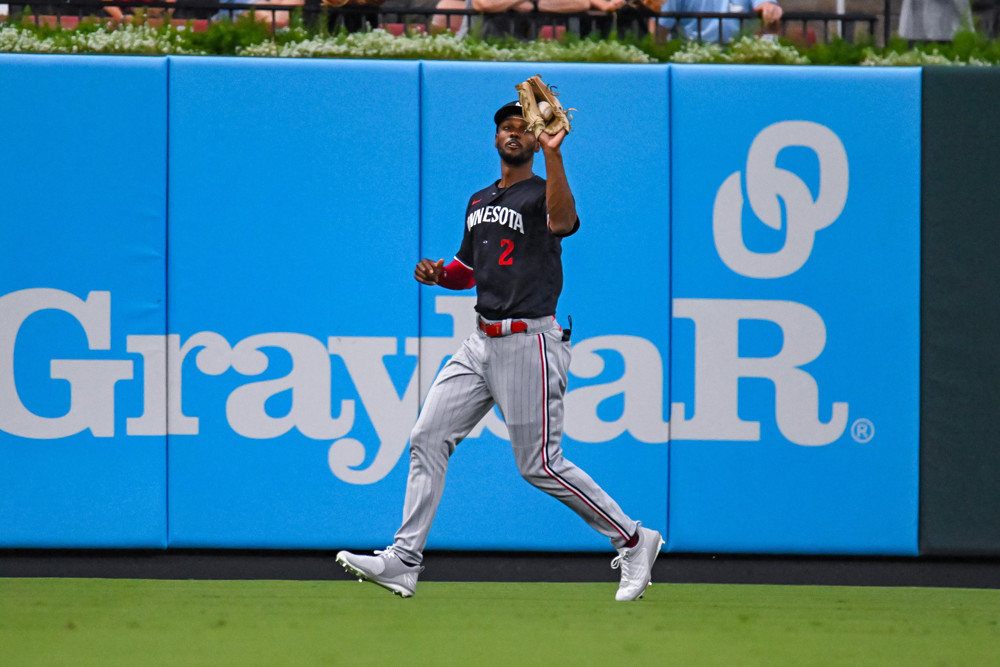By MARK SIMON
When it comes to baseball and neurological processing, what’s often focused on is the speed at which a hitter has to make a decision to swing or take a pitch.
But after watching Mookie Betts make this game-winning catch against Tommy Pham of the Padres last week, I was wondering about the neuroscience involved in making that kind of play.
Dr. Jason Themanson was able to help. Jason is a professor in the psychology department at Illinois Wesleyan University who has done multiple neuroscience presentations at the SABR Analytics Conference.
My initial interest was in both the neurological and physiological aspects of the play, but Dr. Kristen Nicholson, the director of Wake Forest’s pitching lab and biomechanics research lead summed up the latter succinctly, pointing to Betts’ kinesio-awareness, which allows him to make catches like this and home run robberies like his one against Freddie Freeman in the 2020 NLCS.
“He’s athletic and has good body awareness, which allows him to use his mechanics to their full potential,” she said. “But it’s more difficult to say ‘These are the mechanics that allowed him to do this.’”
Nicholson and Themanson were more impressed by the amount of mental processing Betts did in such a short amount of time. Themanson walked us through it.
“The first thing that happens in the brain is that the visual information of seeing the contact is sent to the visual cortex in the occipital lobe, the back of the brain,” Themanson said. “From there, the brain starts to instantly predict the trajectory of the ball and plan for where the ball flight is taking the ball both in terms of location and in terms of velocity.
“Again, this is predictive because the brain knows that as it is processing the current visual information that information is already outdated and delayed, so the brain has to work ahead of time and extrapolate the future coordinates of the ball.”
There’s a lot to take in when it comes to this information, so let’s briefly interrupt to point out how good Betts is when it comes to catching fly balls. Since 2016, he has 85 Defensive Runs Saved just from his range and positioning. The next-closest outfielder has 52. OK, let’s resume…
“This processing starts in the visual cortex and moves forward in the brain to the middle temporal complex, the V5, which is an area of the cortex that is extremely sensitive to and responsive to the visual perception of moving objects,” Themanson said.
“As this is happening visually, the cerebellum as well as premotor areas in the cortex are starting to engage movement responses to get the body to start moving toward the planned/predicted path of the ball to intercept it before it hits the ground – and some of this processing can even start to occur before being aware of the exact visual information – think very reflexive and reactionary and you can adjust on the way.”
The other component here is the dive. By our Video Scout tracking, that play marked the second time that Betts made a diving catch in a regular season game for the Dodgers. He’s had as many as nine in a season (2017). Nine successful diving catches in 12 attempts is both a good total and a good percentage. Since then, he’s 7-of-17, which is a much more ordinary total and rate (MLB average catch rate on dives by outfielders is 52%). But at least in this moment, Betts was extraordinary.
“The decision to dive would be processed through the coordination of the basal ganglia, cerebellum, premotor areas, and motor areas,” Themanson said. “The basal ganglia structures are more involved in the planning or selection of actions and movements and inhibiting unwanted or undesired movements while the other structures (cerebellum, premotor) are more involved in the actual preparation and execution of movements and actions – including the coordination of complex movements and hand-eye coordination.
“Finally, the planned/organized movement patterns end up at the motor area which send signals down the spinal cord to get the body to actually move as planned/desired.”
This is partly a product of Betts’ neurological profile but also a honed skill.
Experience and repetition make an athlete a better candidate to execute the necessary movements to win in that situation.
“They build their neural pathways to be much more efficient to engage in this reactionary, almost reflexive, behavioral response, much quicker than you or I do based on their expertise and perceptual experience,” Themanson said.
And though there’s a lot of neuroscience involved, perhaps the easiest way to describe this is to consider how quickly Betts can solve the kind of geometry problem we might have been asked to do in high school, one involving lines drawn and angles taken. Only in this case, he’s solving for himself and his path to the ball and not for the triangle on the chalkboard.
“He did the math right,” Themanson said. “It was picture perfect based on athleticism and experience.”
In August 2016, I asked ESPN analyst Doug Glanville to assess Betts, who was en route to his first of back-to-back seasons with 30 Runs Saved in right field. “He’s still figuring out how to be efficient in his routes,” Glanville said. “He’s phenomenally talented, super-fast, and constantly working to get better. That’s why he excels in so many ways. The sky’s the limit for him. But there’s way more he can do.”


